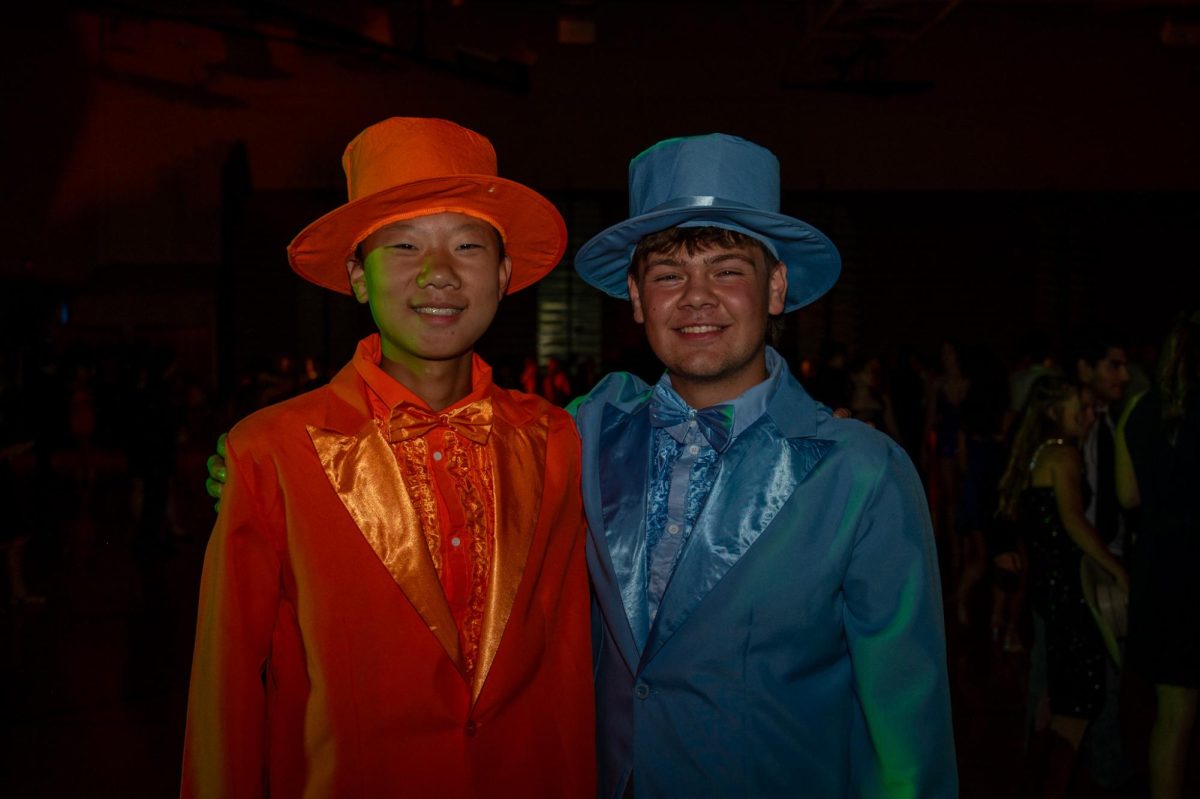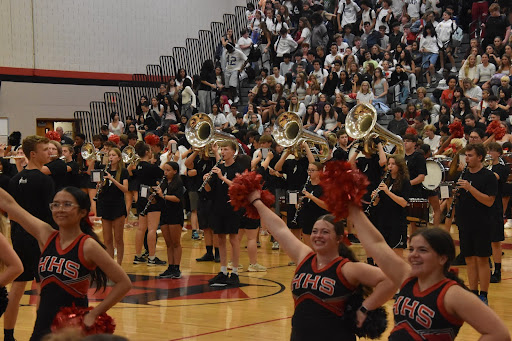Here at Hempfield High School, world language classes are some of the most commonly taken electives. Whether someone takes them to simply get the credits they need to graduate, or they are trying to become fluent in their language of choice, almost everyone takes at least one language class. What a lot of people don’t think heavily enough about, however, is the multitude of possibilities that Hempfield has to offer when it comes to languages. Alongside the standard English, students can take classes in Spanish, French, German, Simplified Mandarin Chinese, and Japanese.
In Hempfield’s Spanish program, students are able to take a total of four sequential courses to build their language skills (or one class in the case of heritage speakers) before being able to take either a film class, a culture class, or the AP Spanish class in hopes of obtaining college credit. Some even manage to take all three. By the end of this sequence, the vast majority of students are on the cusp of being advanced speakers. The Spanish program is by far Hempfield’s largest, with a total of 6 teachers and numerous sections of most of the courses every year. According to Señora Weyforth and Señora Franz-Eby, with the help of the Spanish program, students have become Spanish teachers, studied abroad in Spanish-speaking countries during college, majored or minored in Spanish in college, and used Spanish in everyday jobs. When asked about some highlights in the Spanish program, Señora Franz-Eby wanted to showcase the culture and film classes and their coverage of topics such as government, literature, current events, and cultural phenomena.
Next, there is Hempfield’s German program, in which students are able to take a total of four sequential courses, followed by the option of either an honors-level film class or an AP-level class. By the end of this sequence, students are on track toward soon becoming an advanced speaker. The German program is the most popular when it comes to cultural exchange, sending Hempfield students to Germany regularly and bringing German students here. Through the German program, students have participated in exchange programs, gone on to live in Germany, majored or minored in German, and taken gap years in Germany. When asked about the highlights of the German program, Herr Jannotta wanted to showcase the German 2 class’s reading of a novel in the original German, the German 3’s Adopt A Gnome project, German 4’s focus on history and its East Germany vs. West Germany simulation, the 20+ films watched in the film course, and all of the courses’ common activity of utilizing the FCS classrooms to make and eat authentic German cuisine.
With the French program, students are able to take a total of four sequential courses as well as an honors-level film class and an AP-level class. According to French teacher Madame Tyson, by the end of these classes the vast majority of students are right on the cusp of being advanced speakers, and they are able to do paragraph-level discourse, expand upon points, justify opinions, interview each other, read articles, and listen to podcasts. With the help of the French program, students have hosted French foreign exchange students, gone on foreign exchange programs while in high school, studied abroad in France during college, majored or minored in French in college, and even gone on to attend universities in France, where their studies are completely in French. When asked what the highlights of the French curriculum are, Madam Tyson said that the French 1 vlog and mini Paris projects, French 2 art project, French 3 adopting snails assignment, and French 4’s reading of The Little Prince in the original French were among the fan-favorites of the students.
In Hempfield’s Chinese program, students are able to take a total of four sequential courses, the third and fourth of which are combined with a rotating curriculum for efficiency. According to Chinese teacher Mrs. VanEtten, by the end of their fourth class students are around low to mid-intermediate level speakers, which is lower than the other programs, but that is mostly due to the fact that there are fewer classes and the fact that it does not involve the Latin alphabet like the others. With the help of the Chinese program, many former students have gone on to do things such as study abroad in Singapore or China, major or minor in Chinese in college, become missionaries in China, and work in the organization of cultural exchanges. When asked for the highlights of the program, Mrs. VanEtten wanted to share the Chinese 1 Personal and Family Introduction project, the Chinese 2 Hello Kitty Fashion Show project, language competitions, and the field trip to Chinatown in New York City, and the Chinese 3/4 adoption of worms, Ideal Society project, and city project.
Last but not least, most may not even realize that Hempfield students are able to take Japanese. By the time students are in their junior and senior years, they are able to take Dual Enrollment classes where they take a college class at one of seven partner colleges for both high school and college credit. One of these seven schools, Millersville University, offers Japanese classes that Hempfield students are able to take. Due to the fact that the class is not offered within the high school or during normal school hours and is an in-person class, transportation and timing are among possible problems for students wanting to take the class, but according to the teacher, Professor Rotunno, it is actually quite common for Dual Enrollment students to take her classes, and she has at least one or two every semester. One of the other problems potential students tend to worry about is their ability to thrive under the rigor of a college-level language class. And while this class is, admittedly, harder to keep up with than the language classes we run here at Hempfield, due to its higher expectations and less frequent meetings, Professor Rotunno says that the high school students who take her classes tend to do just as well, and sometimes even better, than the college students, as long as they keep on top of their responsibilities for the class. It is, however, important to note that it is unknown just how many of the Japanese courses Dual Enrollment students can take. Dual Enrollment students have commonly taken the Elementary Japanese 101 and 102 classes, by the end of which students mostly have gained skills to help them as a tourist in Japan and to use as a stepping stone for learning more Japanese. After that, it is possible that Dual Enrollment students could take the Intermediate Japanese 201 and 202 classes, but those classes tend to have so few students that they become independent studies, which Dual Enrollment students cannot take.













